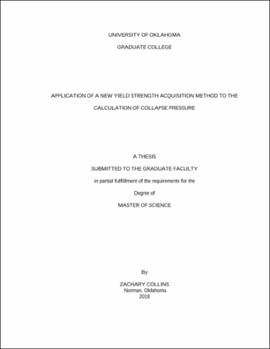| dc.description.abstract | The accuracy of a casing collapse prediction is critical to a successful casing design program. This is especially true today as the likelihood of HPHT reservoirs and difficult conditions downhole has become increasingly more prevalent. To account for these conditions, more up to date, accurate collapse resistance equations and true yield strengths should be used.
The original API collapse equations were adopted in the 1960s and reflect the quality of the pipes produced. Since that time, improvements in manufacturing procedures have increased pipe quality and improved tolerances of material properties. It is necessary to adopt new collapse resistance equations that reflect this improvement in overall quality.
Many new collapse equations have been proposed since the API equations were originally adopted. A review of a selection of these equations compares them to each other, the API equations and real collapse data. As a result, the Klever and Tamano model was shown to most accurately predict the collapse resistance of real pipes.
With a new more accurate collapse equation in place, the next largest factor in determining true pipe collapse depends on knowing the real yield strength of the pipe. The expense of testing has resulted in infrequent testing and, therefore, inherent uncertainty in the material properties of any given pipe. A new method of yield strength acquisition simplifies the testing procedure in hopes of encouraging an increase in testing frequency. Additionally, the new method finds yield strength in the hoop direction instead of the axial direction, which is directly related to collapse.
The new acquisition method was compared against the tested yield strengths given by the pipe manufacturer. Testing was performed on a variety of outer diameters, wall thicknesses, and pipe grades. The new method proved to be very accurate, yielding just a 0.5% variation from the mean yield strength values. | en_US |
